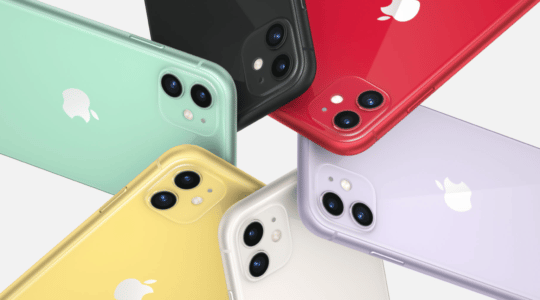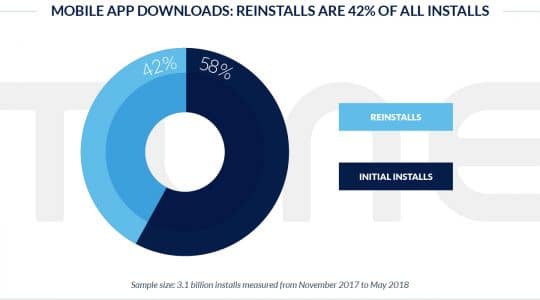Acquiring users costs money, and keeping them is hard. Every app has some amount of churn, but how much and under what circumstances depend entirely on you and the experience you’ve created. Since it’s impossible to measure uninstalls — on all three mobile platforms uninstalls happen at the OS level outside the app and are thus invisible to the app developer and to SDK-based measurement — the next best thing is to track events in-app to capture key engagement points and measure drop-off based on the number of users who hit each of these. 
Since the functionality and flow of mobile apps vary so radically, it’s impossible to identify specific in-app events that everyone should track. So instead I’m going to go through a few common types of events that I see our clients measure and the value propositions behind each.
1. Registration and user info acquisition
Whether you’re a game developer, an mCommerce merchant, a bank, or a lifestyle brand, the moment at which your customer decides they trust you enough to give you their personal information is a key turning point in the user relationship.
Analyzing the engagement rate here can provide critical insight into that relationship. If you’re demanding the info up front and see a large drop-off from Install to Registration you might want to consider allowing an anonymous mode. Conversely, if you see a high engagement rate it means you’re effectively building trust and your users are likely to stick around.
For most apps this is the first major obstacle in the way of monetization and your best opportunity to get an idea of who that end user is so you can customize the user experience and target more effectively. Ask for too much info and you risk alienating people, ask for less and you may pay an opportunity cost by failing to deliver that customization. Fitness, dating, banking, and other apps that have an obvious reason for requiring registration will typically have an easier time getting this info, as will established retail brands, but I can’t think of a single vertical where getting the end user to register (and measuring how many users from each of your acquisition sources complete this step) wouldn’t be beneficial.
2. Tutorial completion or skip
Depending on your app flow this step may happen before or after registration and may be either highly involved or very simple, but there are very few apps that won’t benefit from having at least a minimal “this is where everything is” experience. Measuring whether people complete this step or skip it tells you a lot about how engaging and useful that first interaction with your customers really is. Further, measuring the downstream drop-off rates of your various acquisition sources and comparing that to the tutorial completion or skip rates tells you a lot about the relevance of your app to the demographics being acquired by those sources.
3. First engagement with core value proposition
How you define your core value proposition depends entirely on your app. But every app I’ve seen succeed in the two years I’ve spent selling and implementing analytics solutions to mobile developers has offered a tangible value prop, usually something that can be easily summarized in a sentence by anyone familiar with the app.
Let me give a few examples:
-
For a music service it’s the ability to access a massive library of music on demand without having to buy individual songs first, so ideal metrics are the first time a user plays a song, favorites it, or adds it to a playlist.
-
For a ridesharing app the core value is the ability to get a ride easily and safely so an ideal measure point is the first time the user searches for a ride.
-
For a gaming company it’s the fun people have playing their games so level completions are an ideal metric.
-
For a dating site the goal is a human connection with another user so measuring the first message sent to another user is critical.
-
For mobile retailers it’s the ability to shop easily from anywhere so favoriting an item or adding it to the cart for the first time is a key milestone.
-
For a fitness app the core value prop is the ability to track exercise, diet, or similar personal data points so capturing the first time the user goes for a run, calculates their calories, or otherwise uses the tools makes sense.
None of these data points is directly related to monetization (more on that in a moment) but all of them directly reflect on whether this is a user who’s going to stick around or not.
4. Monetization
Of course every developer is ultimately in it to make money, so measuring when and how your users are giving you money is critical. Whether that’s a monthly subscription event that you send to us server side, an in-app purchase, or even buying the app outright in the app store, these are the actions that fill your bank account and keep you in business. Capturing these events in a solution like MobileAppTracking allows you to compare revenue to the cost of acquisition and calculate ROI across campaigns, acquisition channels, creatives, keywords, or whatever other metrics you’ve decided to measure (look for a future article on how to get the most out of our segmentation tools).
It’s worth pointing out that, unlike some other app events which you probably only want to track the first time, monetization should be captured for every occurrence. I’ve seen plenty of cases where one campaign brought in more initial big purchases but the users dropped off, while a different campaign brought in users who spent less up front but stayed engaged and spent more in the long term — leading to a higher cumulative ROI. The ability to capture end user data for the lifetime of their engagement with your mobile app and trace all of that back to their acquisition point is critical, so make sure you’re using a solution that looks at lifetime value and not just the first few months.
5. What makes your app unique?
There are almost 275,000 games on the Apple store and over 165,000+ on Google Play — that’s a lot of competition! Meanwhile, every retailer, dating site, social media service, etc. who wants to stay in business has either launched, is in the process of launching, or will launch their own app at some point. So what makes your app unique?
This is different from #3 because there I was talking about the core functionality of your vertical which you probably share with all your competitors. Here I’m asking what makes your offering unique and why should people use it instead of one of your competitors?
Obviously I can’t tell you what this killer feature is — it will be different for every app. But if you don’t know what it is for your app or if your users aren’t taking advantage of it, it’s a good sign you need to put some work into your product development.
These are just a few ideas to get you started, depending on your vertical there may be additional events that you should track in your mobile app. What would you add to the list?
Author
Becky is the Senior Content Marketing Manager at TUNE. Before TUNE, she handled content strategy and marketing communications at several tech startups in the Bay Area. Becky received her bachelor's degree in English from Wake Forest University. After a decade in San Francisco and Seattle, she has returned home to Charleston, SC, where you can find her strolling through Hampton Park with her pup and enjoying the simple things between adventures with friends and family.




Leave a Reply
You must be logged in to post a comment.